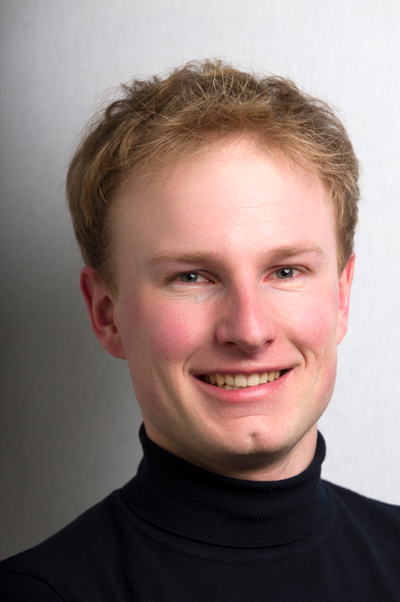Dynamic High Power Laser Beam Shaping in Directed Energy Deposition
Leon Bremer is a a PhD student in the Department Laser Processing. (Co)Promotors are prof.dr.ir. G.R.B.E. Römer and dr.ir. R.G.K.M. Aarts from the Faculty of Engineering Technology.
 Laser-based Directed Energy Deposition (DED-L) is an Additive Manufacturing (AM) technology to fabricate metallic components. A translating focused laser beam induces a melt pool in the workpiece in which simultaneously metal powder or wire is injected and which forms, after solidification, a track of deposited material on the workpiece. The mechanical and functional properties of these tracks depend on the microstructures in these tracks. These microstructures, as well as the track geometries, are largely affected by the thermal fields and thermal cycles during deposition.
Laser-based Directed Energy Deposition (DED-L) is an Additive Manufacturing (AM) technology to fabricate metallic components. A translating focused laser beam induces a melt pool in the workpiece in which simultaneously metal powder or wire is injected and which forms, after solidification, a track of deposited material on the workpiece. The mechanical and functional properties of these tracks depend on the microstructures in these tracks. These microstructures, as well as the track geometries, are largely affected by the thermal fields and thermal cycles during deposition.
To optimise these thermal fields and cycles, the DED-L process is typically optimised by tuning the laser power, the traverse velocity of the laser beam, the material feed rate or a combination thereof. However, these parameters can only be exploited to control the thermal fields and cycles globally. To control the fields and cycles locally, the spatial distribution of the optical power in the focused laser beam — i.e. the Power Density Distribution (PDD) in the focal plane — should be adapted. The aim of this thesis is to study the effect of the PDD on the deposition process and the characteristics of the deposited material as well as to develop a DED-L setup which allows for dynamic beam shaping to dynamically adjust the PDD during the deposition process.
The effect of laser beam shaping in DED-L is studied by deposition of single stainless steel tracks using circular, square and annular uniform shaped PDDs. It was found that the PDD during deposition strongly affected the melt pool morphology, the solidification characteristics and hence the resulting microstructure.
To realise dynamic beam shaping, a setup based on a Deformable Mirror (DM) was proposed, designed and implemented in an existing laser setup. Several significantly different PDDs are created using the DM and showed good agreement with the desired PDDs. Deployment of the developed dynamic beam shaping setup in the DED-L process showed the ability to change the track geometry and the resulting microstructure within the tracks.
This shows that a dynamic beam shaping setup comprising a Deformable Mirror is a powerful tool to optimise the results of the DED-L process.

